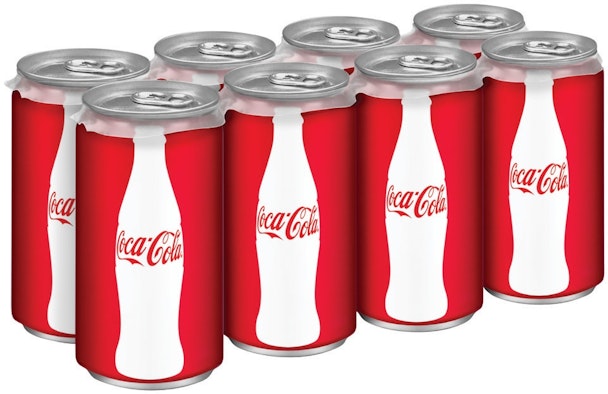Coca-Cola details ‘marketing in smaller sizes’ secret sales tonic
Coca-Cola's revenues struggled in 2014 but the business has backed its “marketing in smaller sizes” approach that is seeing it push smaller cans and bottles at premium prices to lift margins.

The business is under pressure to be more health conscious and consequently is charging less for more essentially, with it willing to absorb the knock to volume sales due to the higher prices affixed to it smaller sizes. It's a move is grounded in the insight that smaller packages can fuel what it has claimed is “more people enjoying more Coke, more often, for a little more money”.
A 12-ounce can traded to a 7-ounce can is a 30 per cent reduction in volume, but it’s an increase in revenue, revealed chief financial officer Kathy Waller. Speaking at Morgan & Stanley’s Global Retail conference this week, the executive used the distinction to highlight what the company has dubbed internally as “marketing in smaller sizes” as its label for a more consumer-conscious business.
The impetus for the shift is that smaller packages are growing much faster than larger packages. Price, therefore, is driven by its ability to keep the volume where it is and gain the price/mix. Coke, like its peers, is hoping the move appeals wins over the rising number of health conscious drinkers who would be willing to pay more for smaller variants even if they are pricier and offset suttering sales in the wake of the paradigm shift in consumption.
“Smaller packages are re-recruiting consumers of all demographics, particularly upper-income consumers and particularly moms, because mums want to treat their kids, but they don’t want them to have too much, they want to be in control,” said Waller. It’s a change in attitude from the drinks maker encapsulated by its focus on “selling Cokes as opposed to Coke”.
While growth of its standard packages had its ups and downs, revenue growth in 2015 has come from its smaller packages, which accounts for 14 per cent of its mix. Indeed, in its second quarter, the drinks maker revealed that the sales volume of its mini-cans rose by double-digits.
It’s a shift backed by an increase in media spend that’s offset by reductions in the number of approved agencies and vendors and the application of our procurement best practices in sourcing our marketing materials and services. In summary, Coke expects marketing productivity – the rate at which marketing generates leads for the sales team - to account for 10 per cent of its current direct marketing outlay.
To that end, it has slashed its roster down to two global providers and around 10 regional providers. It’s the latest in series of changes to Coke’s marketing that has seen it “refine” its market segmentation to develop long-term revenue growth strategies based on clear volume pricing
“We have stepped up our media investment and as a result our direct marketing expenses are growing faster than our gross profit this year,” added Walller. “We are driving underlying margin expansion through a combination of better price realization and productivity initiatives aided by lower commodity costs. However, there have been some increases in expenses.”
Coke’s strategy was given urgency at the turn of the year when the business embarked on a plan to rigth the marketing wrongs that led to lacklustre sales in 2014.

